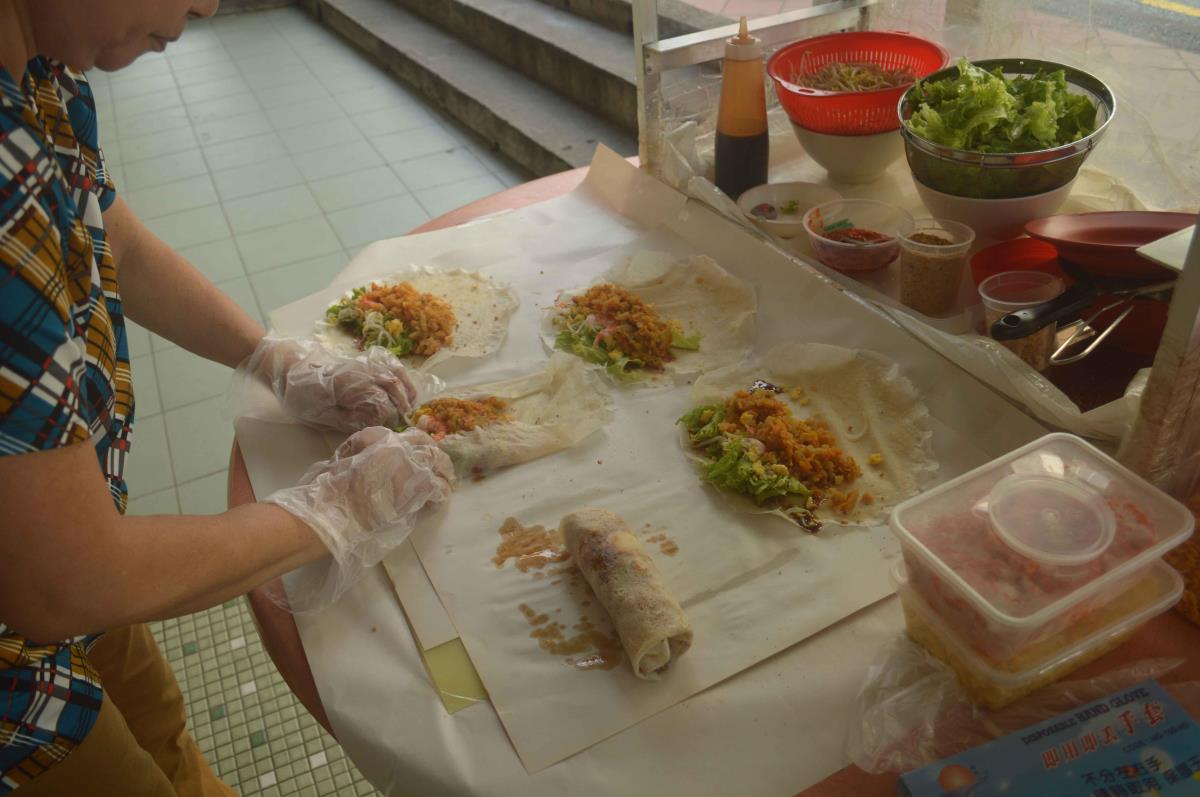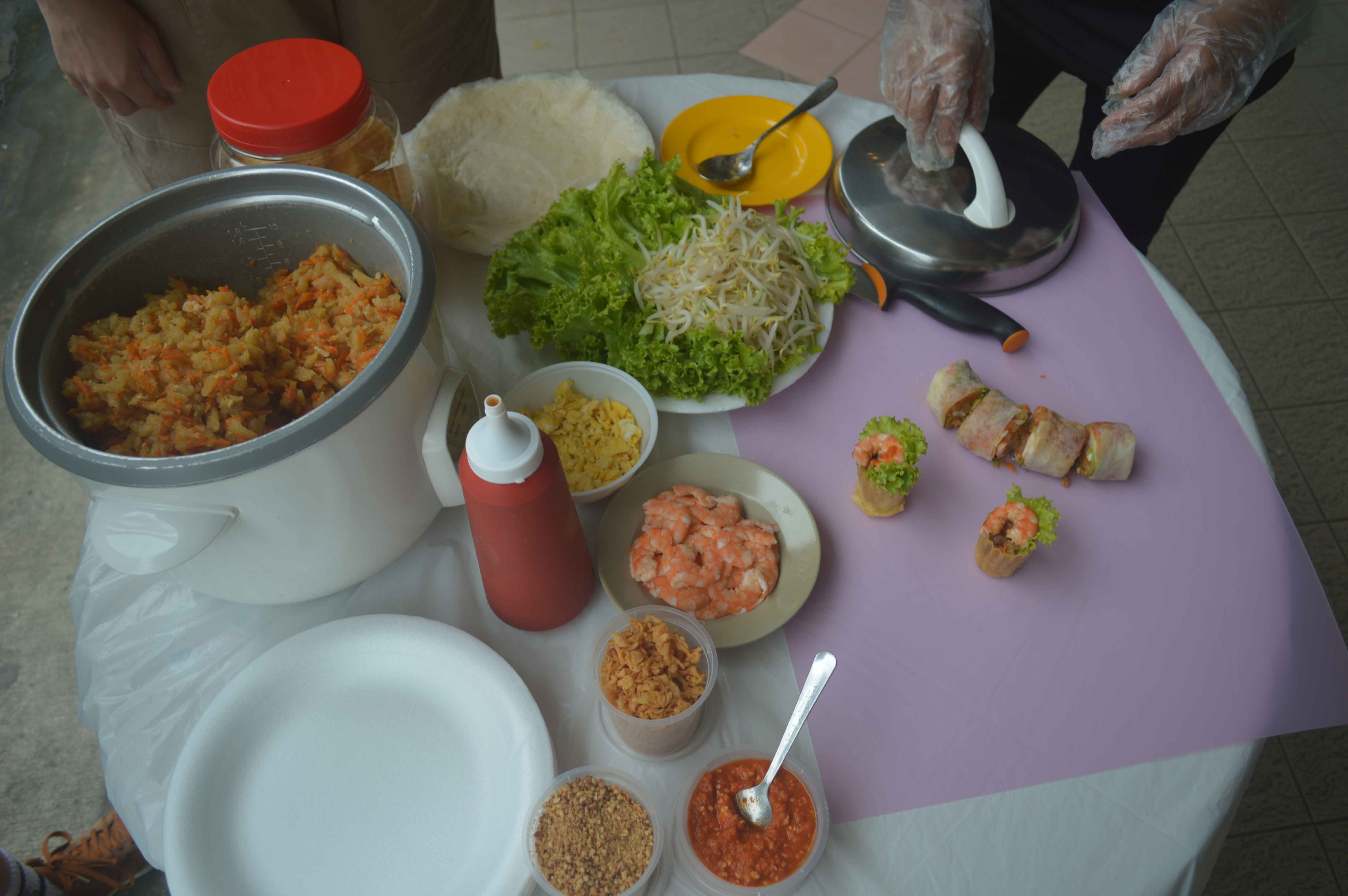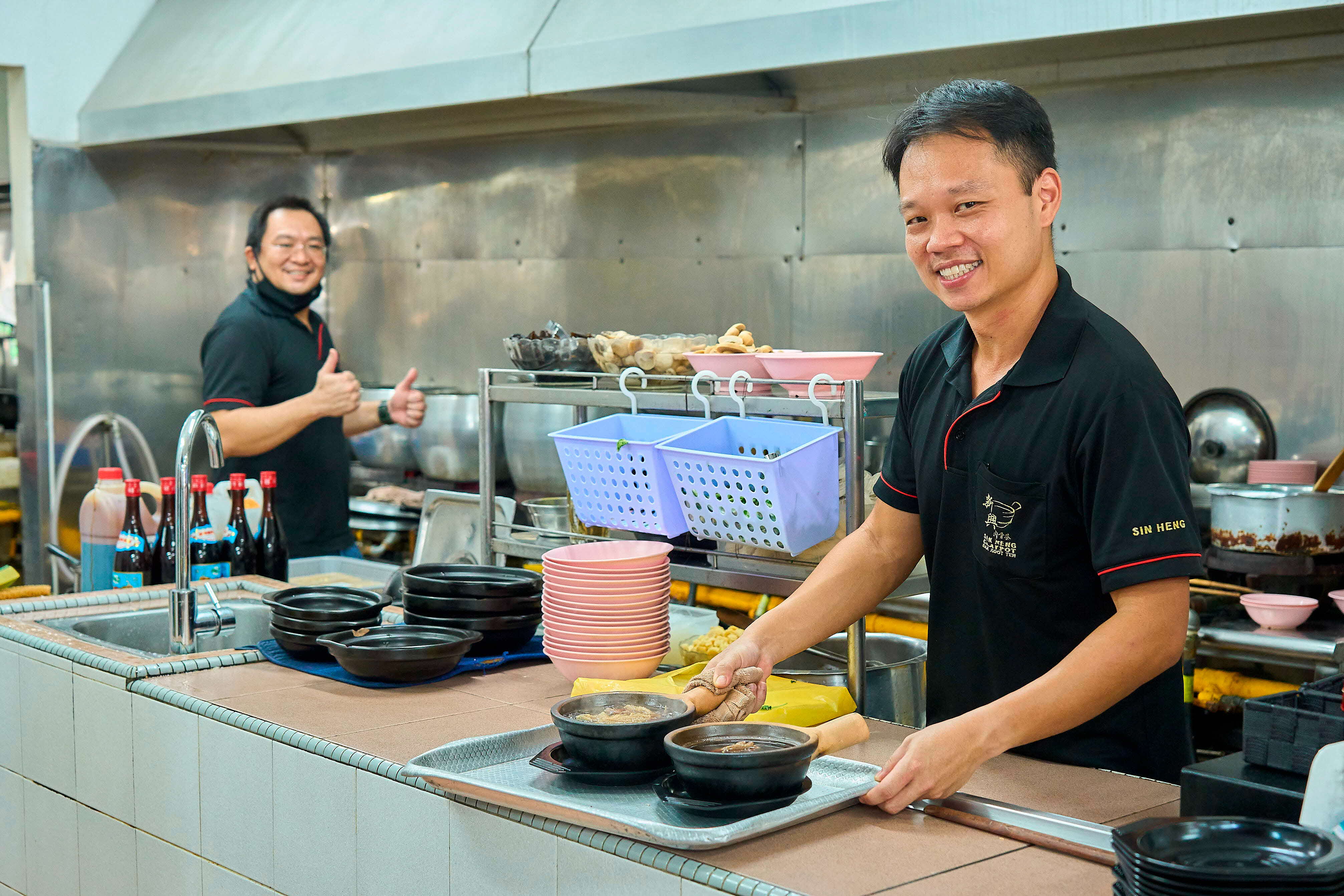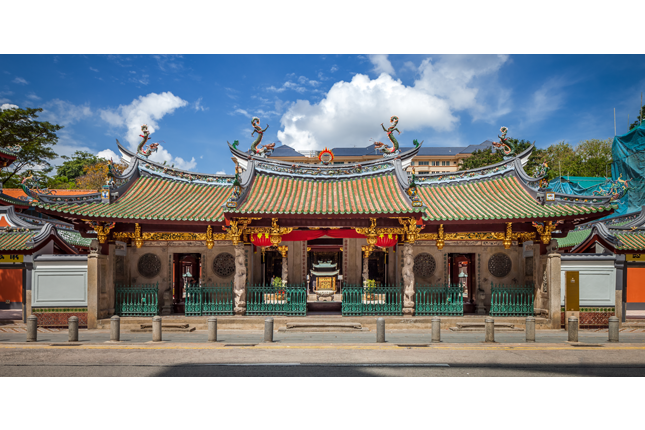Popiah
Popiah (薄餅) is a traditional snack believed to be of Chinese Hokkien origin. Popiah, which means “thin snack” or “pancake” in Teochew, refers to a spring roll made from thin flour skin wrapped around finely chopped vegetables and meat. The snack shares similarities with kueh pie tee, where the same filling is stuffed into pie-crust shells. It is common to see both dishes sold at the same stall in hawker centres and coffee shops around Singapore.
Geographic Location
Believed to have originated from Fujian Province in south eastern China, popiah was said to be eaten during spring when there was an abundance of vegetables. Since then, it has been popular wherever Hokkiens and Teochews have settled.
Communities Involved
Popiahis consumed and enjoyed mainly by the Chinese community in Singapore, as well as the wider community.
In Singapore popiah businesses are often owned and run by Hokkien Chinese. An example is Kway Guan Huat Joo Chiat Popiah, which is one of the oldest establishment within the trade. The business sells popiah skin, kueh pie tee shells, and fillings for both products. Established in 1938, it is one of a handful of shops in Singapore that still makes popiah skin and kueh pie tee cups by hand. There is also homegrown company Tee Yih Jia, headed by Mr Sam Goi Seng Hui. It is one of the largest popiah skin-makers in the world, exporting popiah skins to almost 50 countries.
Associated Social and Cultural Practices
There are many versions of popiah, although the typical ones are the Hokkien and Peranakan versions. Both versions consist of shredded bamboo shoots, dried beancurd, jicama (a type of turnip), lettuce, beansprouts, eggs, cucumbers, carrots, long beans, and roasted ground peanuts, with additional toppings such as pork and lup cheong (dried sausage). The Peranakan version includes seafood such as prawn and crabmeat.
To make a popiahroll, a thin layer of sweet sauce, chilli, and garlic paste is spread on the skin. A leaf of lettuce is first laid on the skin before piling on wet fillings, and then dried ingredients and sauces. The ends of the skin are sealed upon wrapping. A popiah is sweet, spicy, savoury, and hearty all at once. Getting the right amount of ingredients is crucial to provide this balance of flavours.
The secret to a good popiahis its skin. A good popiah skin is chewy, resilient, and paper-thin. Typically made of wheat flour, the batter is mixed with water, oil, and salt. The dough is churned by hand before being cooked on a hot griddle.
In addition to being a popular snack, popiah is also associated with rituals. Besides being used as offerings for ancestral worship, popiah is also eaten as a snack during the Qing Ming Festival.
Experience of a Practitioner
At Kway Guan Huat Joo Chiat Popiah, an 83-year-old heritage business in Katong-Joo Chiat, the art of making popiah has been passed down through generations. Mr Michael Ker, the third-generation owner, and his family, including his aunt, Ms Vicky Quek, continue to make popiah skins from scratch using the traditional hand-made technique.
The making of popiah has brought the whole family, with each member of the family given specific roles. According to Ms Vicky Quek, “Making and flipping the dough is strenuous and requires a lot of strength so we leave it to the men in the family. The women will concentrate on cooking and making the kueh pie tee shells.” Kway Guan Huat is halal-certified and remains popular with Malay and Indian customers as well.
For Michael, it is about carrying on the legacy. He has been training his younger nephew and cousin to make popiah skins using this technique and is seen as an inspiring figure by younger family members and visiting students. He also experiments with new versions of popiah to cater to different tastes and to appeal to the younger generation. He has conducted education workshops and demonstrations for tourists, local groups, and students, which delve into the cultural history of popiah and are paired with tastings. He has also shared widely about his craft in international food festivals and showcases such as New York, Copenhagen, and Dubai.
In 2020, Michael was conferred the Stewards of Intangible Cultural Heritage Award for his dedication to promoting and transmitting his skills and knowledge of popiah-making to wider audiences and the younger generation.
Future Viability and Outlook
Restaurants have added contemporary twists to popiah, such as Ice Cream Popiah at the Warehouse Hotel’s Po restaurant. The Hokkien and Peranakan communities have made efforts to educate the public about the process of making popiah by holding events relating to food and heritage, such as the Singapore Hokkien Festival held by the Singapore Hokkien Huay Kuan. Michael in his role as a Steward of ICH has also organised more than 20 workshops for the underserved to spread the joy of and delight of popiah making.
The sustainability of the practice, particularly the skill of making popiah skins by hand, depends on younger generations to carry on the trade. While the laborious hours involved in popiah-making may deter new entrants, Michael is committed to passing down time-honoured techniques of popiah-making to younger family members, hoping to spur them on to continue their family legacy.
References
Reference No.: ICH-086
Date of Inclusion: October 2019
References
Tan, Chee Beng. Chinese Food and Foodways in Southeast Asia and Beyond. Singapore: NUS Press, 2011.
Tan, Christopher and Van, Amy. Chinese Heritage Cooking. Singapore: Marshall Cavendish International Asia, 2012.
Wee, Sharon. Growing Up In A Nyonya Kitchen: Singapore Recipes from my Mother. Singapore: Marshall Cavendish International, 2012.
Xie Hui Qun. “The art of making perfect popiah skin – many people in Singapore haven’t seen this.” The Peak, http://thepeakmagazine.com.sg/gourmet-travel/art-hand-crafting-perfect-popiah-skin/. Accessed 30 July 2017.















